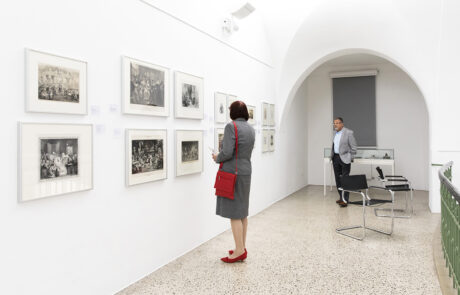After Rubens
Etchings from three decades
14 October 2018 – 10 February 2019
Small Exhibition Hall
With his proverbial “Rubens figures”, i.e. voluptuous female nudes, and large-format paintings, Peter Paul Rubens (1577 – 1640) continues to shape our ideas of Baroque art to this day. Printmaking played an important role in the artistic discourse of his time, because it was the only way to disseminate the great artists’ innovative pictorial inventions throughout Europe. Rubens himself used prints both as a source of inspiration for his own works and as a medium for disseminating his original pictorial inventions.




